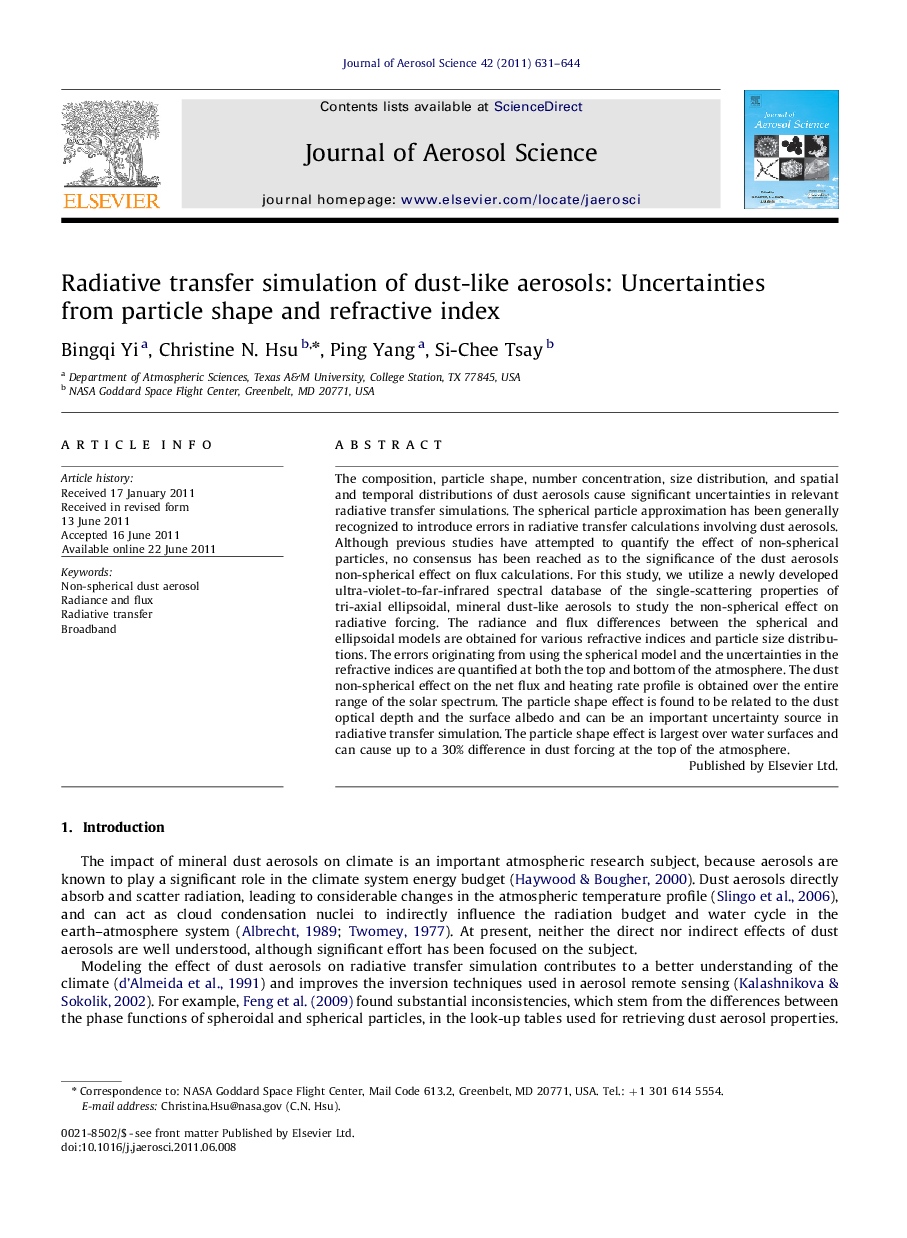| Article ID | Journal | Published Year | Pages | File Type |
|---|---|---|---|---|
| 4452679 | Journal of Aerosol Science | 2011 | 14 Pages |
The composition, particle shape, number concentration, size distribution, and spatial and temporal distributions of dust aerosols cause significant uncertainties in relevant radiative transfer simulations. The spherical particle approximation has been generally recognized to introduce errors in radiative transfer calculations involving dust aerosols. Although previous studies have attempted to quantify the effect of non-spherical particles, no consensus has been reached as to the significance of the dust aerosols non-spherical effect on flux calculations. For this study, we utilize a newly developed ultra-violet-to-far-infrared spectral database of the single-scattering properties of tri-axial ellipsoidal, mineral dust-like aerosols to study the non-spherical effect on radiative forcing. The radiance and flux differences between the spherical and ellipsoidal models are obtained for various refractive indices and particle size distributions. The errors originating from using the spherical model and the uncertainties in the refractive indices are quantified at both the top and bottom of the atmosphere. The dust non-spherical effect on the net flux and heating rate profile is obtained over the entire range of the solar spectrum. The particle shape effect is found to be related to the dust optical depth and the surface albedo and can be an important uncertainty source in radiative transfer simulation. The particle shape effect is largest over water surfaces and can cause up to a 30% difference in dust forcing at the top of the atmosphere.
► The effect of particle's non-sphericity on dust radiative forcing is investigated. ► The particle shape effect is largest over water surfaces. ► The shape effect could cause a 30% difference in TOA dust forcing. ► The shape effect is comparable to the refractive index uncertainty effect.
